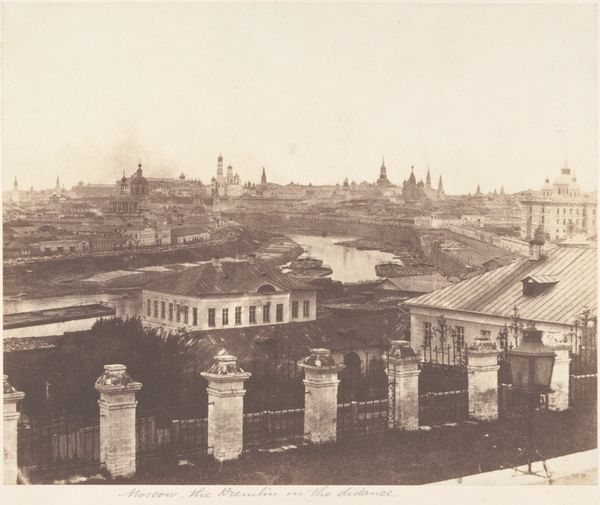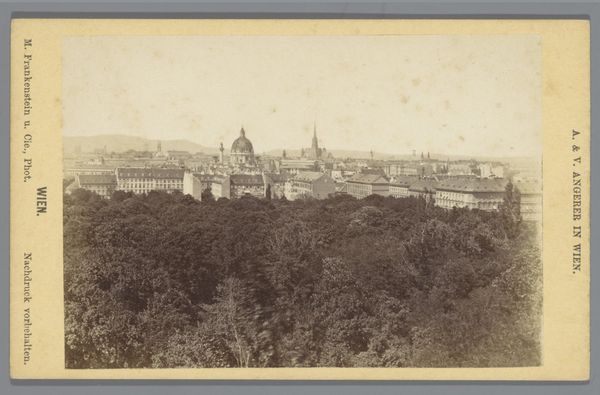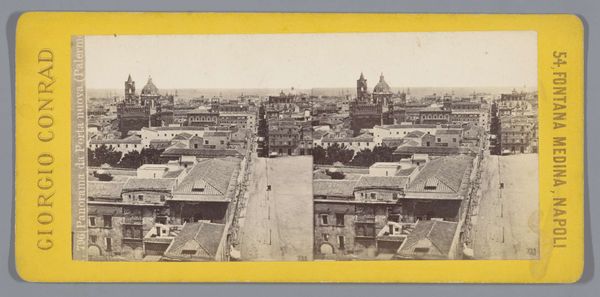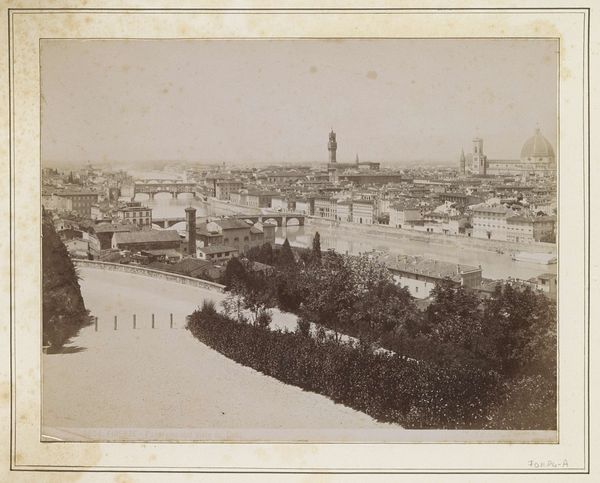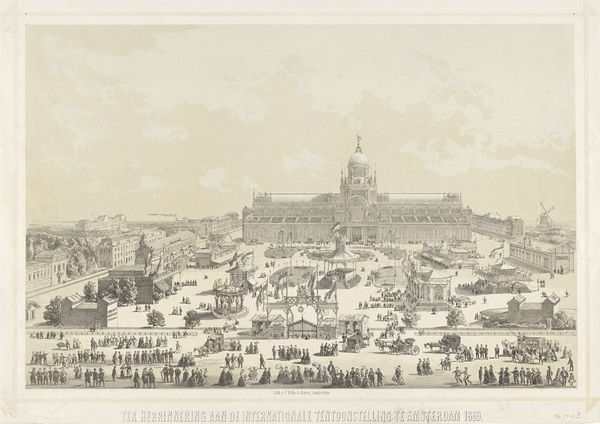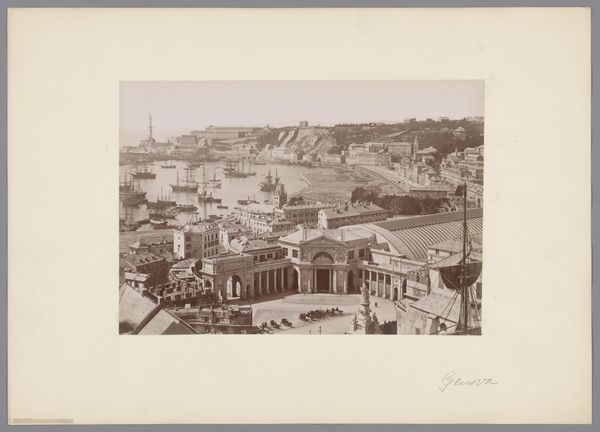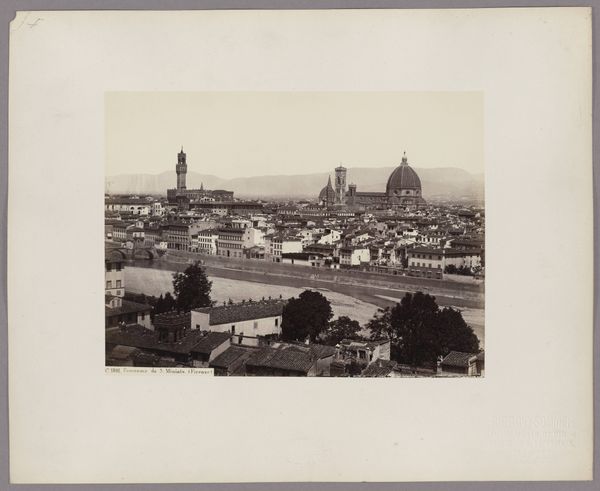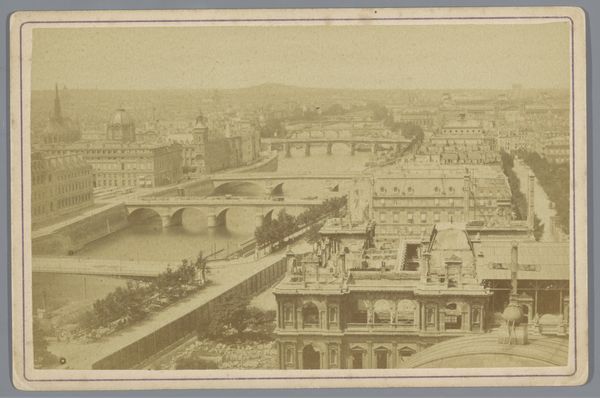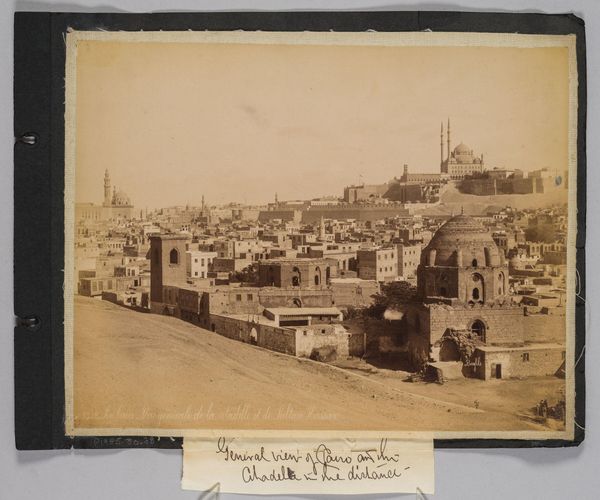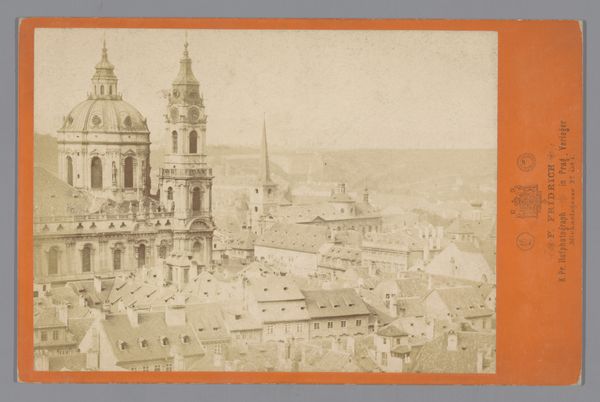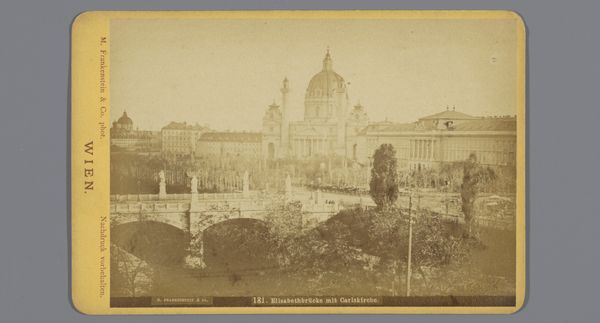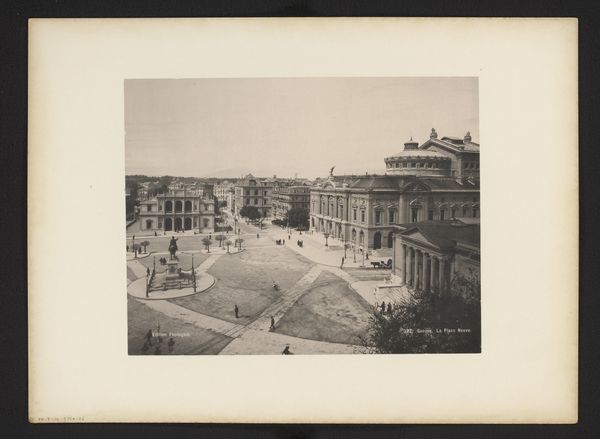
photography, gelatin-silver-print
#
photography
#
gelatin-silver-print
#
cityscape
#
italian-renaissance
#
realism
Dimensions: height 201 mm, width 259 mm, height 221 mm, width 270 mm
Copyright: Rijks Museum: Open Domain
Editor: Here we have Paolo Lombardi's "Gezicht op Siena, Italië," a gelatin silver print created sometime between 1862 and 1873. Looking at it, I'm immediately struck by how this panoramic view seems to freeze a specific moment in Siena's urban development. What historical narratives do you think are embedded in this image? Curator: That’s a great starting point. I think the image speaks volumes about the intersection of civic pride, technological advancement, and the burgeoning tourism industry of the late 19th century. Lombardi, through the objective lens of the camera, is not simply documenting a city; he is constructing a visual argument about Siena's place in the Italian Renaissance and its continuing relevance. Consider, who was this image for? Was it commissioned by the city itself to project a certain image, or intended for wealthy tourists seeking souvenirs of their travels? Editor: That's a thought-provoking question. It feels like this could have multiple intended audiences, shaping how it presents the city's story. The detail captured with this new technology makes you wonder about the stories of people living within the cityscape. What kind of politics do you see influencing Lombardi's decisions regarding perspective or the focus of the city itself? Curator: The photograph avoids any sharp critique. Note how the eye is directed upwards toward the magnificent Siena Cathedral, which embodies civic power and faith. Lombardi’s strategic elevation point certainly promotes an almost utopian view, carefully avoiding social realities of poverty. Photography at this time became entangled with social messaging, deliberately obscuring what powerful figures decided needed to be hidden. Don’t you find it interesting to reflect how photographic technology advanced but social consciousness perhaps lagged behind? Editor: Absolutely. The choices about what *not* to show become as revealing as what is included. Thinking about how Lombardi presented Siena through this lens gives a much greater appreciation for its complicated history. Curator: Indeed. By investigating such art pieces as historical narratives, and exploring what they deliberately conceal, we are able to cultivate a critical awareness about art’s enduring influence on society.
Comments
No comments
Be the first to comment and join the conversation on the ultimate creative platform.

